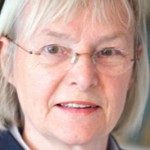Link to Pubmed [PMID] – 24821700
Hum. Mol. Genet. 2014 Oct;23(19):5087-101
Congenital heart defects affect at least 0.8% of newborn children and are a major cause of lethality prior to birth. Malformations of the arterial pole are particularly frequent. The myocardium at the base of the pulmonary trunk and aorta and the arterial tree associated with these great arteries are derived from splanchnic mesoderm of the second heart field (SHF), an important source of cardiac progenitor cells. These cells are controlled by a gene regulatory network that includes Fgf8, Fgf10 and Tbx1. Prdm1 encodes a transcriptional repressor that we show is also expressed in the SHF. In mouse embryos, mutation of Prdm1 affects branchial arch development and leads to persistent truncus arteriosus (PTA), indicative of neural crest dysfunction. Using conditional mutants, we show that this is not due to a direct function of Prdm1 in neural crest cells. Mutation of Prdm1 in the SHF does not result in PTA, but leads to arterial pole defects, characterized by mis-alignment or reduction of the aorta and pulmonary trunk, and abnormalities in the arterial tree, defects that are preceded by a reduction in outflow tract size and loss of caudal pharyngeal arch arteries. These defects are associated with a reduction in proliferation of progenitor cells in the SHF. We have investigated genetic interactions with Fgf8 and Tbx1, and show that on a Tbx1 heterozygote background, conditional Prdm1 mutants have more pronounced arterial pole defects, now including PTA. Our results identify PRDM1 as a potential modifier of phenotypic severity in TBX1 haploinsufficient DiGeorge syndrome patients.
